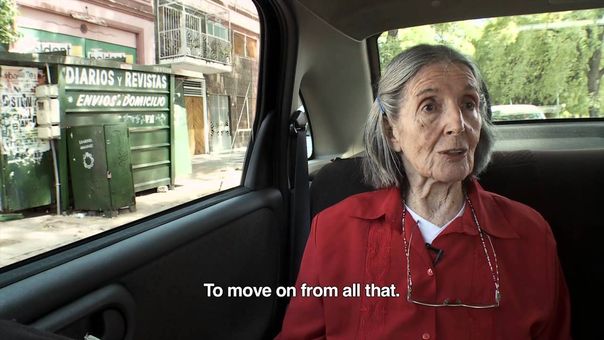Tiempo suspendido (Suspended Time)
By Arantxa Sánchez

What is the best way to forget? Laura Bonaparte might have asked herself this question over and over when three of her four children were devoured by the Argentine dictatorship in the 70's. Converted into one of the Mothers of the Plaza de Mayo, in addition to initiating a relentless search to locate them while still alive, Laura also created thousands of small memories that her granddaughter Natalia has recovered from a suspended time.
For the director Natalia Bruchstein, that suspended time is the universe created from her grandmother: Laura Bonaparte as a person and Laura Bonaparte as a public and overtly political figure. For more than 40 years, both viewpoints are blended through photographs, letters, documentaries and newspaper articles that over time went from being a simple documentary record to the only way of preserving the past.
Bruchstein’s work of resignification is expressed in her debut documentary feature Suspended Time (2015), highlighting her ability to translate a predicament representing the pain of an entire generation into images. The director picks a life story out of this generality which, thanks to its filial proximity, adds an intimate and human perspective.
The portrait that Natalia constructs of her grandmother weaves two moments together: the memory represented in a past where Laura was a strong and lucid woman; and the amnesia as the present where she is a fragile woman wracked by senile dementia. This human look is complemented with textures obtained by close-ups (the skin) and wide angle shots that complete the construction of the portrait exercise (the full body).
This narrative structure turns the spectator into a witness guided by Natalia, where an attempt is made to confirm that even though a person without memory has no identity, the pain of the disappearance pulls her grandmother over to regard her illness as a need and oblivion as a sedative.
Suspended Time eliminates any trace of melodrama and pity when thinking about the topic, as the protagonist, Natalia in that sense, makes small provocations inserted into the questionings made by her grandmother: the only purpose is to search for solutions, ways out, to give meaning to her speech and based on her viewpoint, understand a life that is inexorably linked to hers.
The fragility and sensitivity with which Laura is built is the result of Natalia's observations as an author. She uses this closeness to the subject and at the same time weaves stories of other members of her family into the narrative. The resource guide the director resorts to is a voiceover that recites Laura's writings devoted to her children and that will serve as an anchor toward more universal topics such as memory and oblivion.
In Suspended Time the voice of the granddaughter and of the grandmother combine to ensure that this accumulation of memories is orderly, read and even released from the pain that it represented for so long. In this double play where Natalia found her origins, the spectator also understands the importance of naming (in this case through images) in order to verify the existence of these events that have marked universes both small and large.

